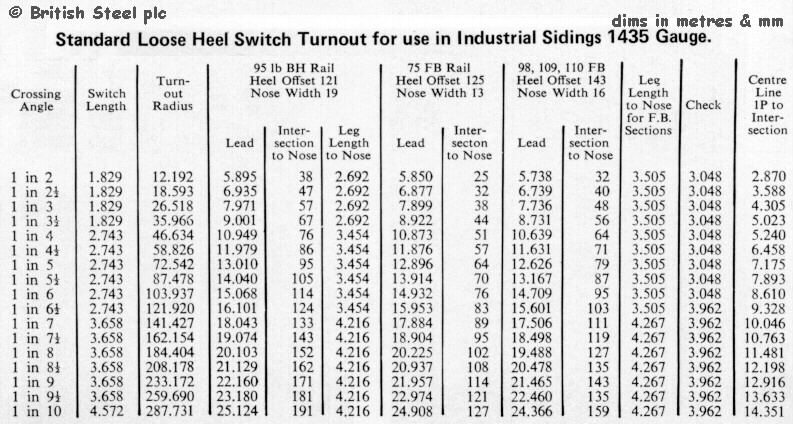Julian Roberts wrote:Les I have thought the same. I will try to summarize the thread on one side of A4 for here and/or the Snooze.
But the salient points are briefly:
1.It is a question - why does the Society Triangular Gauge give only half the gauge widening on curves that the prototype would use?
Because the gauge designer thought that was enough, and it has proven to be so for many years now.
Note: Models are not the same as the prototype in this respect, first the P4 standards have compromises in wheelset back to back and checkgauge that increase clearances to allow for curves of less than scale radius, secondly we can build sideplay into our loco chassis to a greater extent than the prototype, these factors mean that strictly prototypical gauge widening is not essential. Modellers using the more exact S4 variant of the standards or indeed any modellers may wish to use the prototypical figures of course.
2. How long would a gauge be that gave prototypical Gauge Widening
3. Alan Turner explained how gauge widening is a stepped process on the prototype, which a triangular tool cannot replicate. He gave several options presenting them in graph form, showing how little the Society gauge gives, and that a tool giving full widening at 5.5 chains will then give you too much at lower radii.
4. My son produced a simplified graph and all the numbers represented by that graph.
Points 3 and 4 answer 2.
5. I realised that the question needed to be reframed more precisely as 'why does the Standard say 528mm is the radius at which maximum permitted widening occurs.'
That can only really be answered by Russ Elliott who seems to have introduced it into the standard when he revised it. It was not part of the original standard and is not really relevant.
I don't think Martin established any causal link between these two references to 528mm, it may just be co-incidence.6. I asked this question as a riddle in a new topic and FINALLY began to get answers that made sense from Martin Wynne, whose absence from the thread had surprised me.
7. Martin established that the 528 came from BRSMB standards 60+ years old.
As also covered in points 3 and 4 and in the new series from Will.8. He established in the early hours of this morning that a 47mm length tool could be both practical and prototypical (I think!)
9. The rest of the thread is taken by very many various misunderstandings, clarifications, perhaps some obfuscation, some resistance to questions being asked, and now denial of the obvious, that the standard needs updating.
I don't think it at all obvious that the standard needs updating. Following the standard works just fine and I have seen no report of any specific problem in following the standard. It might be better to remove the reference to 528mm radius as it is really irrerevant but as that does not affect use of the standard its not of itself enough to justify an update.
10. However, a lot of the thread is taken up by what remains a perennial question, whether the prototype stepped function can ever be adequately replicated by a triangular tool that gives a continuously varying function, and the difficulty of teasing out this issue in the written word.
If 'perennial' means that Julian keeps on about it
Regards
